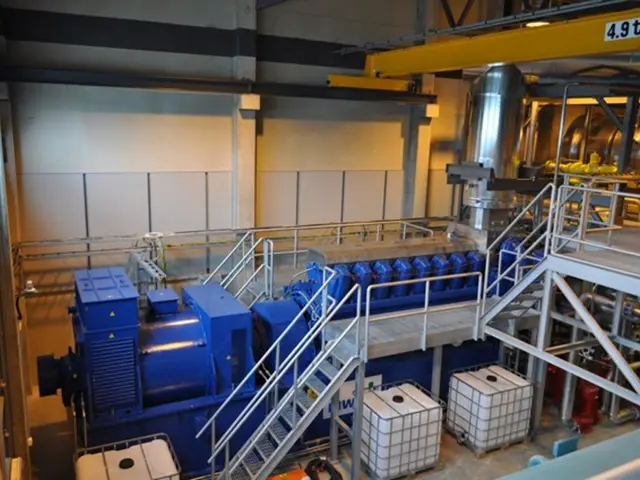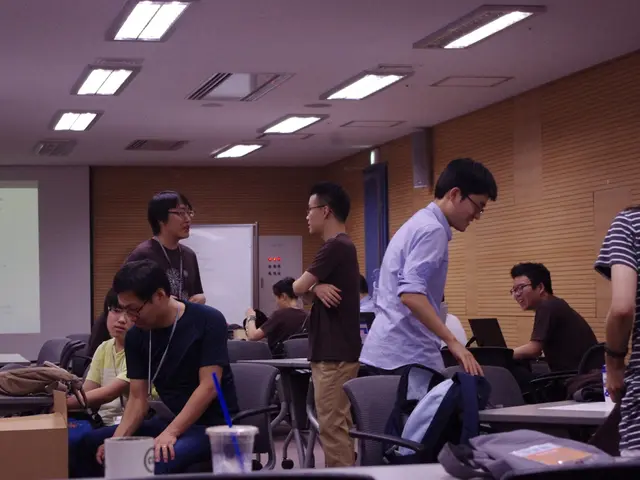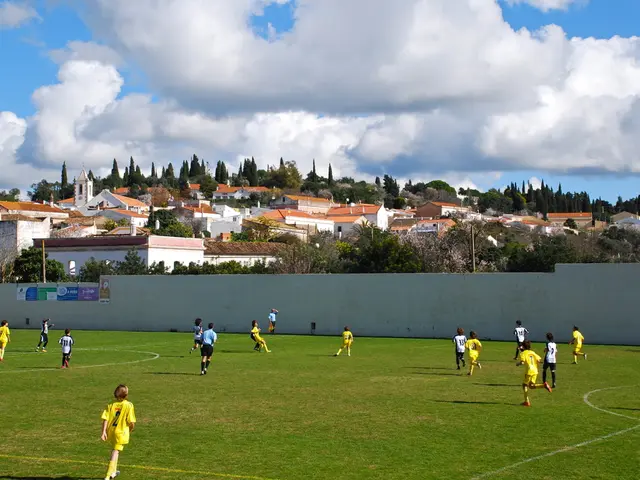Creative Redesigns Reshaping Open-air Learning Environments
Outdoor learning spaces have morphed from run-of-the-mill add-ons to fully-fledged learning environments, designed for maximum engagement and innovation. By merging nature-oriented elements, flexible seating arrangements, and modern technology, schools are revolutionizing their students' academic journeys.
This paradigm shift encourages exploration, collaboration, and hands-on experiences, setting the stage for a harmonious blend of education and the great outdoors.
Flexible Seating for Diverse Learning Styles
The incorporation of adaptable seating is the key to captivating students' interest and fostering collaboration. Unlike rigid, traditional seating, flexible arrangements cater to various preferences and learning styles. Movable benches or bean bags offer alternatives that suit individual comfort and learning needs. With plenty of options available, students can choose the seating style that works best for them.
The layout of outdoor furniture profoundly impacts student dynamics. Round seating areas invite open discussions, whereas smaller clusters encourage teamwork on projects or discussions. When schools prioritize versatile and modern outdoor furniture, they unlock numerous possibilities for self-directed learning, addressing diverse learning styles along the way.
Nature's Benefits for Education
Leaning into nature's arms offers a myriad of benefits for students and teachers alike. The presence of natural surroundings stimulates cognitive function and promotes emotional regulation, leading to reduced stress levels and better overall well-being.
Schools that embrace outdoor spaces foster active learning and creativity, encouraging students to engage with their natural surroundings through gardens, shaded seating areas, and interactive play structures. Building a connection to nature produces environmentally aware and appreciative students, cultivating responsible citizens in the process.
Multifunctional Spaces That Shine
Smart outdoor designs feature multifunctional spaces that cater to various needs throughout the school day. These versatile areas can serve as instructional hubs, relaxation zones, and community event venues. By employing moveable furniture, schools can adapt spaces based on schedule changes or specific requirements. A space sporting collapsible tables can transform from a classroom to an outdoor lunch spot, accommodating both academics and leisure activities.
Multifunctional spaces foster a sense of community among students, staff, and families. Art installations or community gardens bring beauty to the campus and promote collaborative efforts on projects. Students can take part in creating murals or planning flowerbeds, making these areas more inclusive and enriching. Collaborative pursuits teach students the value of teamwork and self-reliance.
Technology's Role in Fresh Air Learning
The blending of technology and outdoor learning creates a powerful learning experience, bridging the gap between nature and the digital realm. Schools are embracing outdoor classrooms that incorporate digital tools for effective instruction. Tablets, interactive displays, and other tech resources encourage cooperation and provide access to a wealth of educational resources, elevating the learning experience beyond the walls of traditional classrooms.
Additionally, solar-powered charging stations and Wi-Fi access points keep students connected regardless of their location. This seamless integration of technology empowers teachers to leverage diverse teaching styles and multimedia resources, giving students and educators a dynamic learning platform.
Environmental Advocacy Through Outdoor Education
Outdoor learning spaces provide a unique opportunity to instill an appreciation for sustainability and the environment in students. By engaging students in building birdhouses, recycling initiatives, and other conservation-oriented projects, schools shape the attitudes of future generations.
Through experiential learning, students forge a connection with their local ecosystem and understand their role within it. This heightened awareness fosters critical thinking skills related to environmental issues and solutions, transforming subjects like biology into relatable and relevant topics. By weaving these experiences into outdoor designs, schools cultivate environmentally conscious and active citizens.
Community Collaboration
Inviting the community to engage with school institutions turns outdoor spaces into vibrant hubs of learning, recreation, and connection. Schools partnering with local organizations can create dynamic community spaces that cater to various events and activities. By extending an invitation to community members, schools strengthen the bond between students, parents, and local citizens.
Community gardens or performance areas can host a plethora of events, such as farmer's markets, art exhibits, and cultural celebrations. These collaborative efforts foster unity and make schools relevant, accessible centers for the larger community. These interactions enrich students' understanding of local issues and relationships, creating well-rounded, community-minded individuals.
Outdoor learning spaces evolve from mere extensions of classrooms into lively community assets, fueling engagement and promoting learning beyond the confines of traditional education.
- The future of learning is increasingly being realized in outdoor environments, where flexible seating arrangements allow for a better catering to diverse learning styles, making education more engaging and innovative.
- By incorporating natural surroundings in their designs, schools enhance students' cognitive function, emotional regulation, and overall well-being, encouraging a deeper connection with nature.
- Versatile multifunctional spaces in outdoor learning environments, such as art installations, community gardens, and interactive play structures, support active learning, creativity, and community collaboration.
- The fusion of technology and outdoor education allows for seamless integration of diverse teaching styles, empowering educators to leverage digital tools for effective instruction and create a dynamic learning platform.
- Outdoor learning spaces provide a valuable opportunity to instill an appreciation for sustainability and the environment in students through hands-on projects and experiential learning, fostering critical thinking and cultivating responsible, environmentally conscious citizens.








